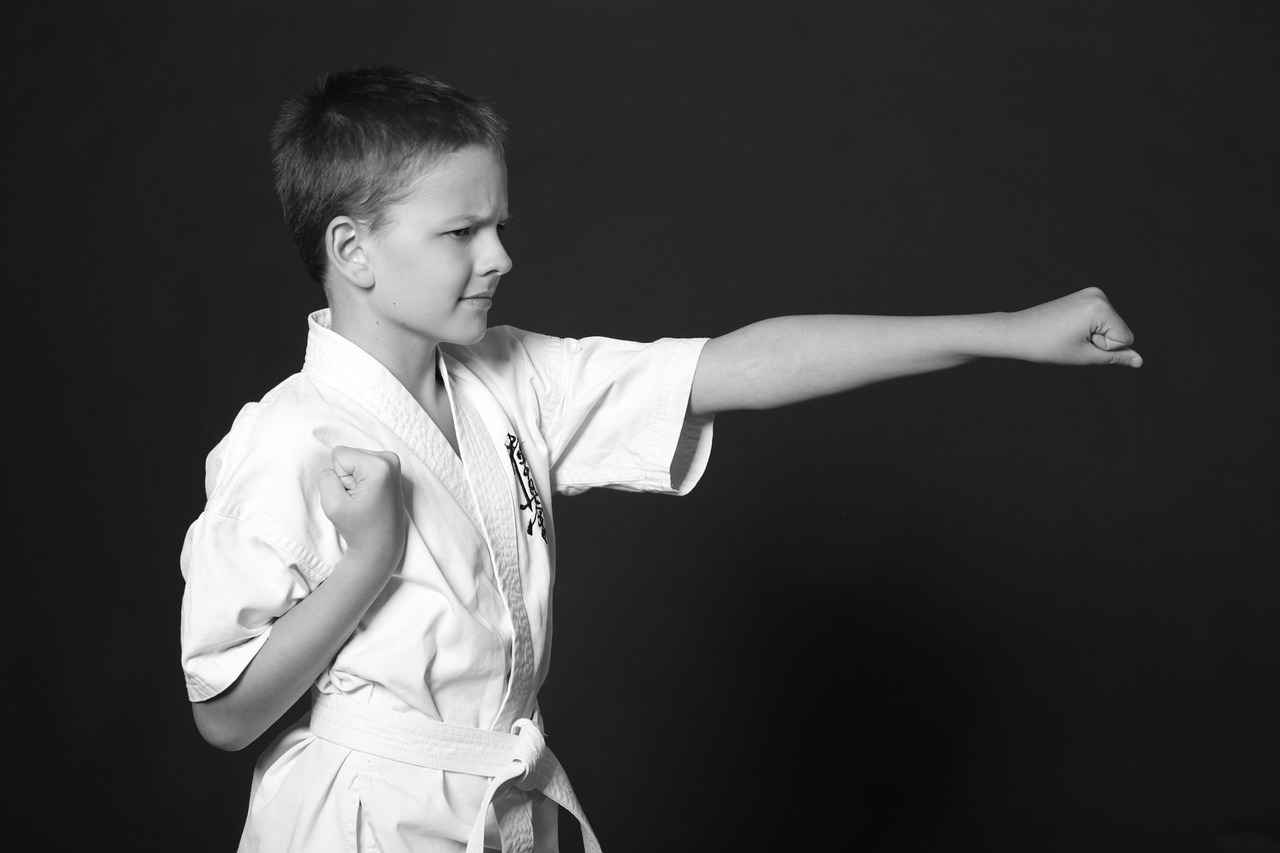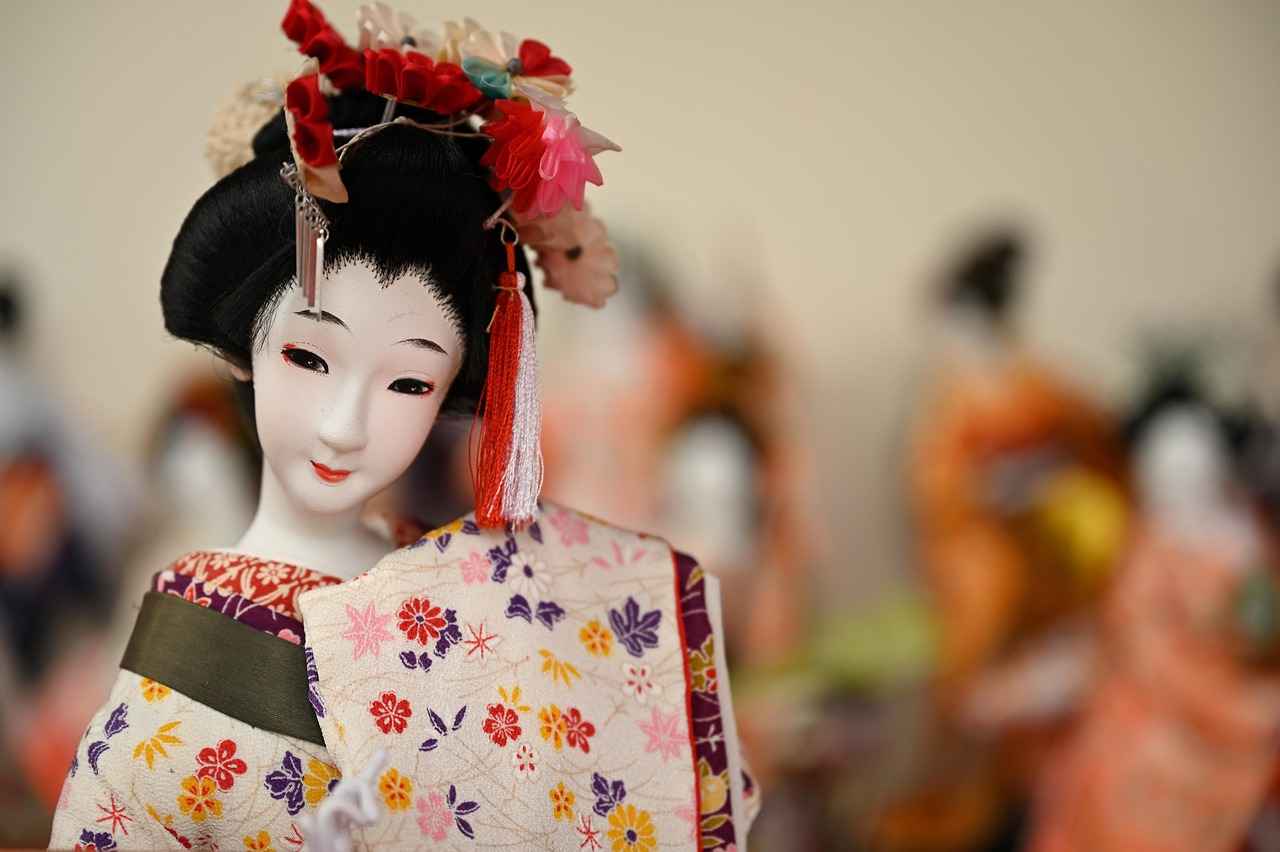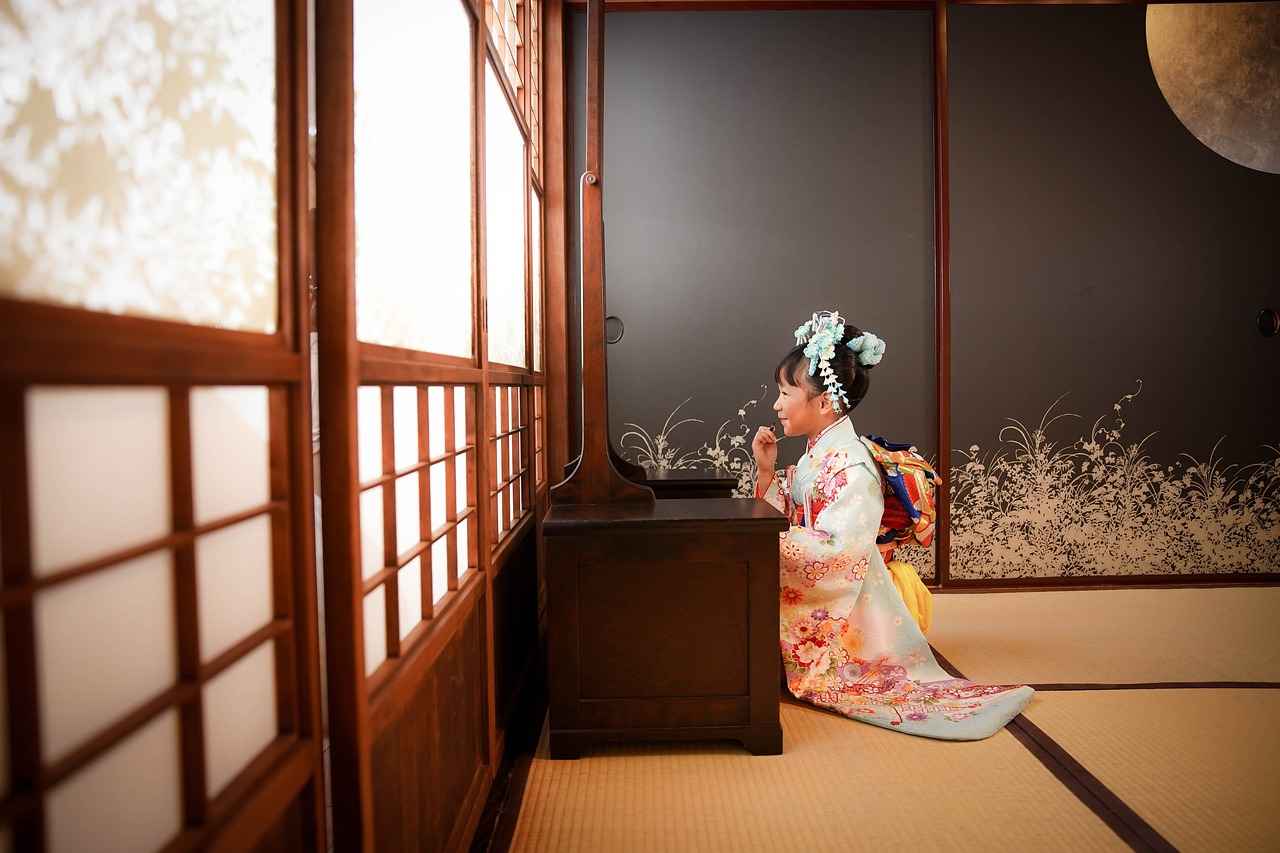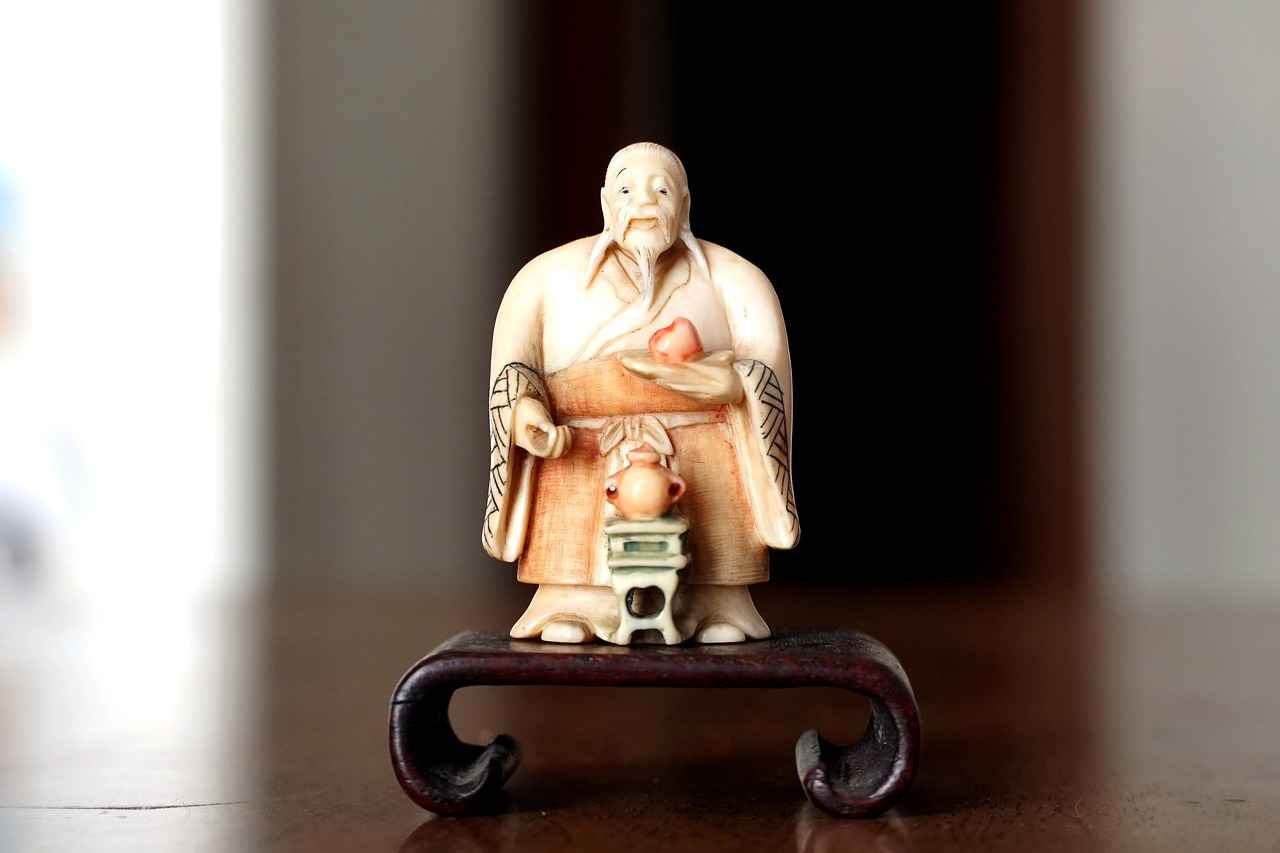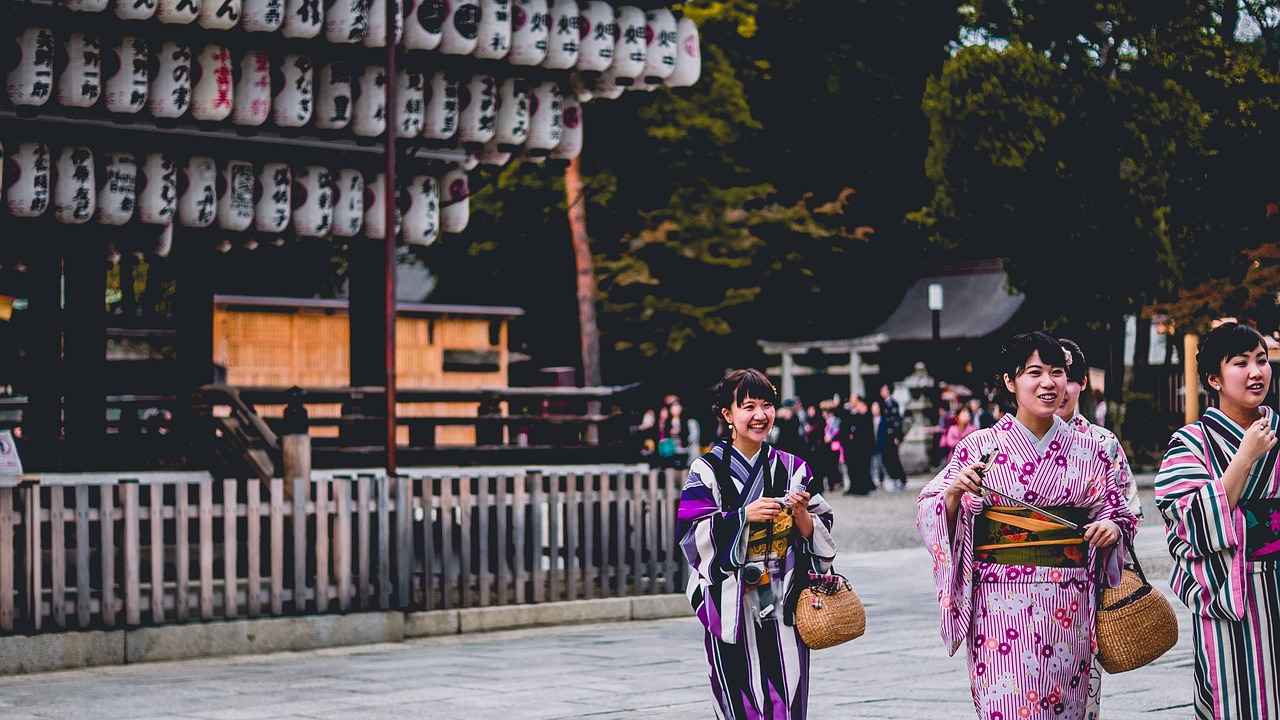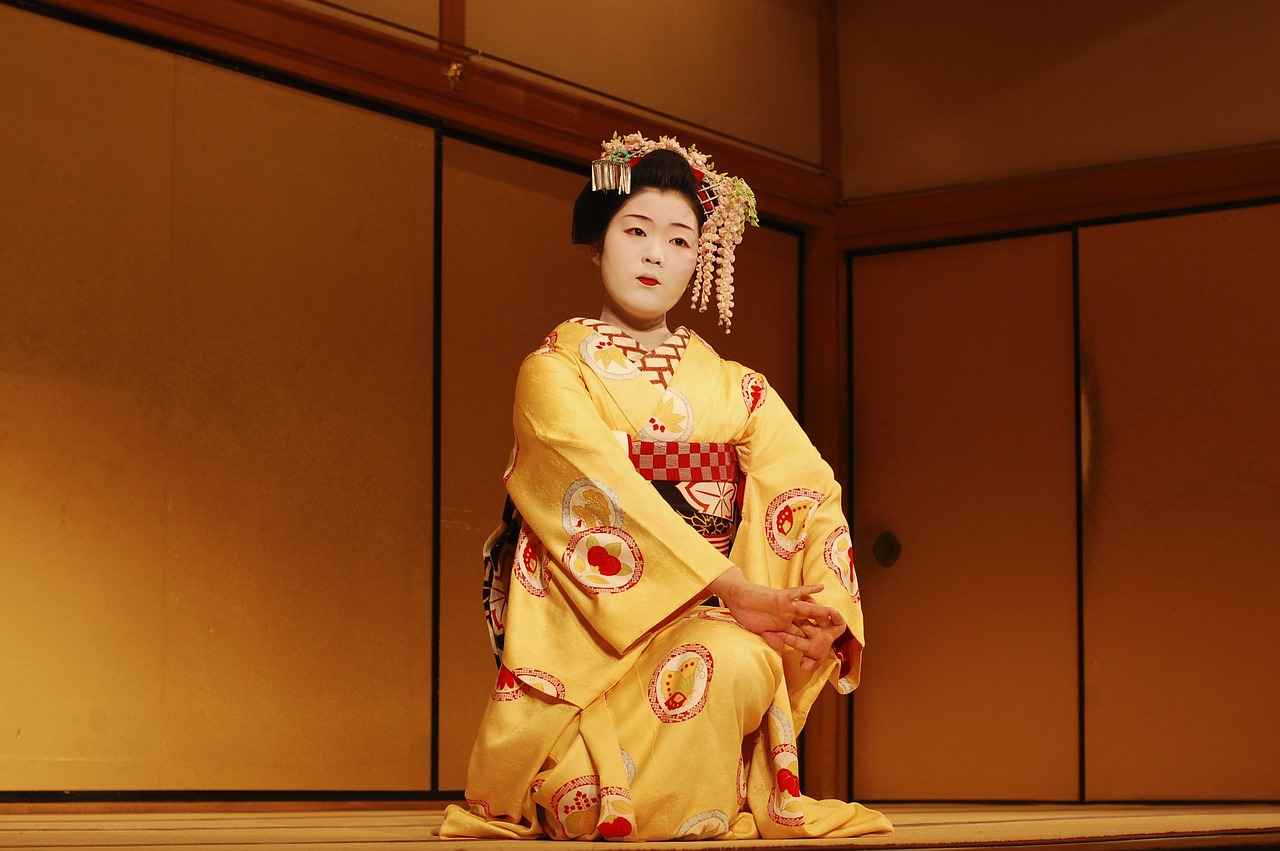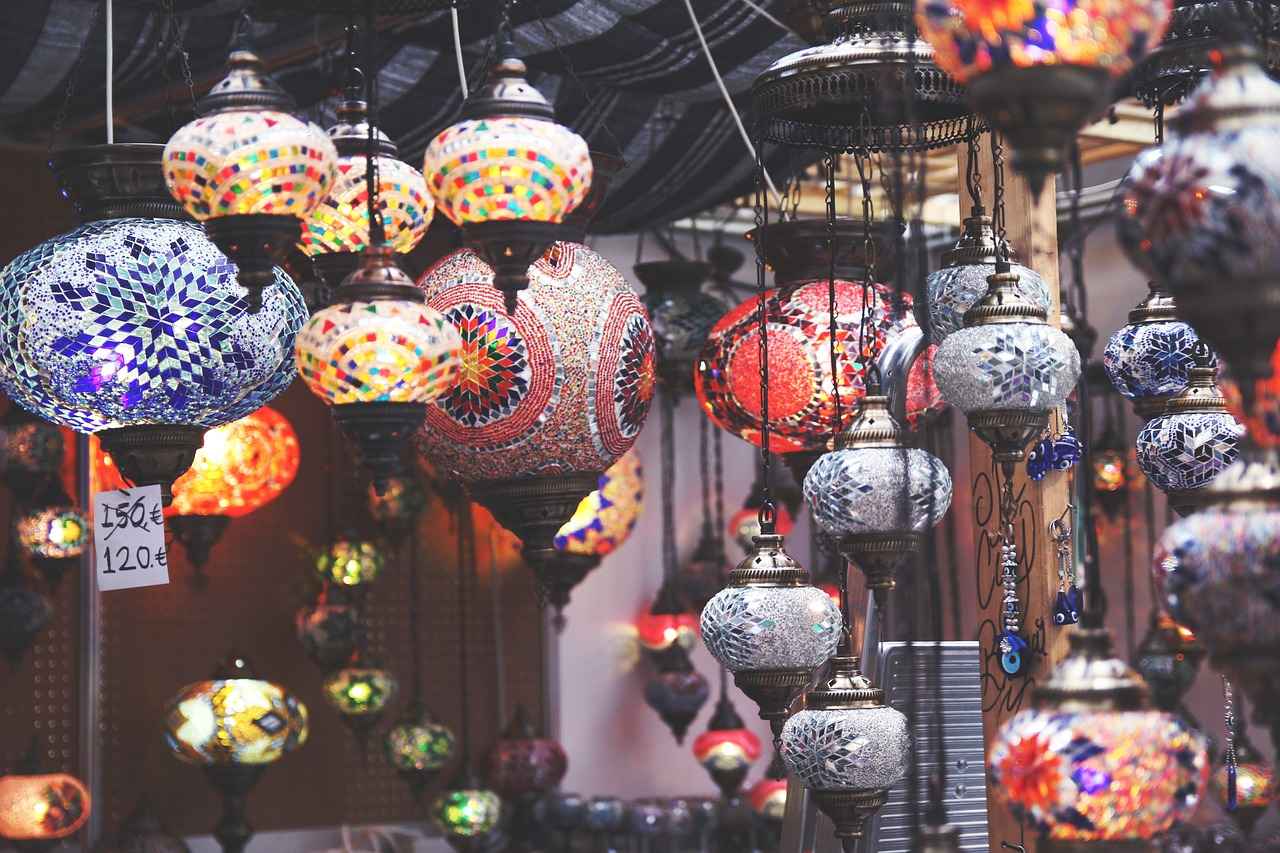This article serves as a comprehensive guide on wearing a kimono, detailing various styles, essential accessories, and the cultural significance behind this traditional garment. Our goal is to empower you to feel both confident and respectful at your next cultural event.
Understanding the Kimono
A kimono is not just a piece of clothing; it is a symbol of Japan’s rich history and culture. Recognizing the different components of a kimono is crucial for anyone looking to wear one with authenticity and respect.
Choosing the Right Kimono Style
Selecting the appropriate style is essential, as different occasions require different types of kimonos. Casual, formal, and ceremonial kimonos each serve unique purposes.
- Yukata: A lightweight cotton kimono often worn in summer festivals, perfect for beginners.
- Furisode: Characterized by long sleeves, this formal kimono is typically worn by young women during special events.
- Tomesode: An elegant choice for married women, often adorned with intricate designs for formal gatherings.
Selecting the Right Fabric
The fabric of your kimono significantly influences its look and comfort. Common materials include:
- Silk: Luxurious and ideal for formal occasions.
- Cotton: Casual and comfortable, great for everyday wear.
Accessorizing Your Kimono
Accessories are vital in completing your kimono ensemble. Key items include:
- Obi: A wide belt that secures the kimono, enhancing your outfit.
- Obijime: Decorative cords that add flair.
- Haneri: Collar pieces that can elevate your overall look.
How to Properly Wear a Kimono
Wearing a kimono correctly is essential for both comfort and style. Follow a step-by-step guide to ensure proper wrapping and securing.
Understanding Kimono Etiquette
Respecting kimono etiquette is crucial to honor its cultural significance. Knowing the appropriate situations for wearing a kimono enhances your experience.
Conclusion: Embracing the Kimono Culture
Wearing a kimono transcends mere fashion; it is about embracing a rich cultural tradition. With the right knowledge and respect, you can confidently wear a kimono at your next event.
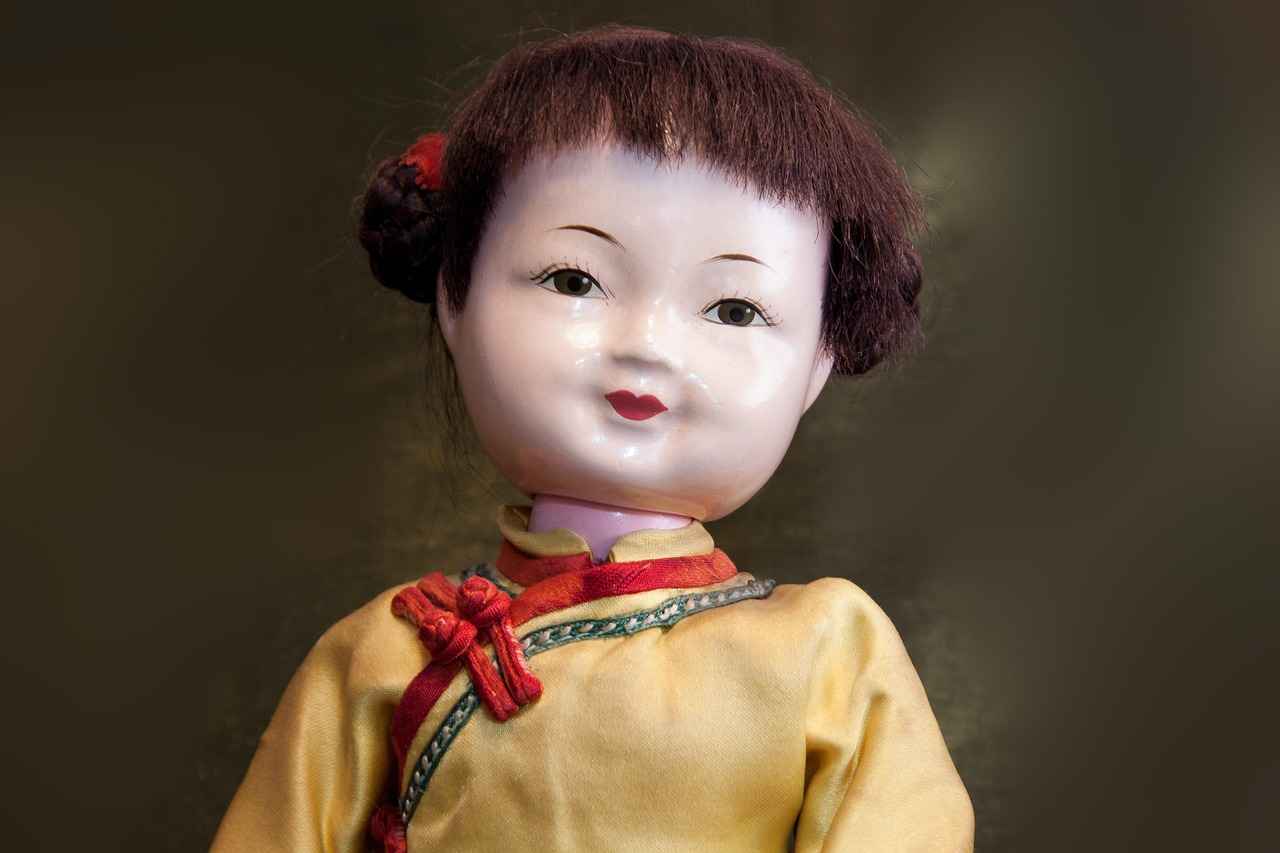
Understanding the Kimono
A kimono is a traditional Japanese garment that embodies centuries of cultural heritage. Its intricate designs and unique construction reflect the artistry of Japanese craftsmanship. Understanding its components and cultural significance is essential for anyone looking to wear one appropriately, as it allows for a deeper appreciation of this beautiful attire.
The kimono is composed of several key elements, including the kimono body, sleeves, and obi (the belt). Each part plays a vital role in the overall aesthetic and functionality of the garment. The fabric, often made from silk or cotton, varies in texture and pattern, influencing the kimono’s use for different occasions.
Throughout history, the kimono has evolved, adapting to societal changes while retaining its traditional roots. For instance, the yukata, a casual summer kimono, is popular during festivals and is typically made from lightweight cotton. In contrast, the furisode, characterized by its long sleeves, is reserved for young women on special occasions, symbolizing elegance and youth.
Moreover, wearing a kimono is not just about the garment itself; it is about embracing a cultural experience. Understanding kimono etiquette—such as how to properly wear and care for the kimono—enhances the experience. For example, the way a kimono is wrapped and secured can signify various meanings, making it essential to learn the correct techniques.
In conclusion, the kimono is more than just clothing; it is a representation of Japanese culture and history. By understanding its components and significance, you can wear it with confidence and respect, celebrating its beauty and tradition at any cultural event.

Choosing the Right Kimono Style
is an essential aspect of wearing this beautiful traditional garment. Each kimono style serves a specific purpose and is suited for different occasions, ranging from casual outings to formal ceremonies. Understanding these distinctions will help you select the perfect kimono for your event.
In Japan, kimonos are categorized primarily into three styles: casual, formal, and ceremonial. Each style reflects the occasion’s level of significance and the wearer’s status.
- Casual Kimonos: These are often worn during relaxed settings, such as summer festivals or family gatherings. The yukata, made from lightweight cotton, is a popular choice for casual events, especially in warm weather.
- Formal Kimonos: Typically reserved for important occasions, formal kimonos like the furisode are characterized by their long sleeves and vibrant colors. They are commonly worn by young women during weddings and other significant life events.
- Ceremonial Kimonos: These are the most elaborate and are worn during traditional ceremonies, such as tea ceremonies or Shinto weddings. The tomesode, often adorned with intricate designs, is a prime example of a ceremonial kimono, usually worn by married women.
When selecting a kimono, consider the event’s formality, your personal style, and the season. For example, a yukata is ideal for summer festivals, while a furisode would be more appropriate for a wedding. Additionally, the choice of fabric plays a crucial role; silk kimonos offer elegance for formal events, whereas cotton kimonos provide comfort for casual outings.
Ultimately, understanding the different styles of kimonos ensures that you choose one that not only fits the occasion but also allows you to express your personal style while respecting the cultural significance of this beautiful garment.
Types of Kimonos
When exploring the world of kimonos, it is essential to recognize that there are various types, each with its own unique characteristics and intended occasions. Understanding these distinctions will help you select the right kimono for any event.
- Yukata: This is a lightweight cotton kimono typically worn during the warm summer months. Yukatas are often adorned with vibrant patterns and are ideal for casual settings, such as summer festivals or fireworks displays. They are easy to wear and are a popular choice for those new to kimono culture.
- Furisode: Known for its long, flowing sleeves, the furisode is a formal kimono worn primarily by young women during significant life events, such as weddings or coming-of-age ceremonies. The elaborate designs and rich colors signify youth and celebration, making it a striking choice for special occasions.
- Tomesode: Unlike the furisode, tomesode kimonos are typically worn by married women. They feature shorter sleeves and often come in subdued colors with intricate patterns. Tomesode are reserved for formal events, such as weddings or tea ceremonies, symbolizing elegance and maturity.
- Hōmongi: This type of kimono can be worn by women of all ages and is characterized by its beautiful patterns that flow across the seams. It is versatile enough for both formal and semi-formal occasions, making it a popular choice for various events.
- Shiro-maku: A traditional white kimono often worn during religious ceremonies or rituals. Its simplicity signifies purity and is typically adorned with minimalistic designs.
Each of these kimono types serves a specific purpose and reflects the cultural significance of the occasion. By understanding the differences, you can choose the perfect kimono that not only fits the event but also respects the traditions behind this beautiful garment.
Yukata: The Summer Kimono
Yukatas are a beautiful representation of Japanese culture, especially popular during the summer months. These lightweight cotton kimonos are not only comfortable but also embody the spirit of summer festivals, known as matsuri. Designed for casual wear, yukatas are an excellent choice for those who are new to traditional Japanese clothing.
Typically, yukatas are made from breathable cotton, making them ideal for warm weather. Their vibrant colors and patterns often reflect seasonal themes, adding a festive touch to any occasion. Whether attending a fireworks display or a local festival, wearing a yukata allows individuals to immerse themselves in the cultural experience.
One of the key features of a yukata is its simplicity. Unlike formal kimonos, which require intricate tying and layering, yukatas can be easily worn with just a few adjustments. This makes them accessible for beginners and those who may feel intimidated by traditional attire. To wear a yukata, simply follow these steps:
- Start by putting on the yukata, ensuring it wraps around your body comfortably.
- Secure it with an obi, a wide belt that holds the garment in place.
- Add an obijime, a decorative cord, for an extra touch of style.
- Finish with a pair of traditional sandals, such as geta or zori.
Accessorizing your yukata can also enhance your overall look. Consider incorporating traditional items like a haneri, a collar piece, or a kakeobi, a decorative knot, to personalize your outfit. These additions not only elevate your appearance but also showcase your understanding of the garment’s cultural significance.
In conclusion, yukatas serve as a wonderful introduction to the world of kimonos. Their ease of wear, coupled with their vibrant designs, makes them a popular choice for summer events. By embracing the yukata, you not only enjoy a comfortable and stylish outfit but also participate in a rich cultural tradition that celebrates the beauty of Japanese heritage.
Furisode: The Formal Kimono
Furisode kimonos hold a significant place in Japanese culture, particularly as a symbol of youth and elegance. These stunning garments are characterized by their long sleeves, which can reach up to 100 cm in length, and are often adorned with intricate patterns and vibrant colors. Traditionally, they are worn by young women during important life events, such as weddings and coming-of-age ceremonies, known as Seijin Shiki.
The design of a furisode is not only visually striking but also rich in meaning. The long sleeves are believed to represent a young woman’s unmarried status, while the elaborate designs often reflect personal and familial significance. Typically, furisode are crafted from luxurious materials like silk, enhancing their elegance and allure.
When selecting a furisode, it is essential to consider the occasion. For weddings, brides may opt for furisode with floral motifs symbolizing prosperity and happiness, while attendees might choose more subdued colors to complement the celebratory atmosphere. In contrast, during coming-of-age ceremonies, young women often wear vibrant colors to express their transition into adulthood.
Accessorizing a furisode correctly is also crucial. The obi, a wide belt, plays a pivotal role in securing the kimono and enhancing its overall appearance. Additionally, decorative elements like obijime (a cord) and haneri (collar) can add a touch of personal flair. Choosing accessories that harmonize with the kimono’s colors and patterns can elevate the entire ensemble.
In conclusion, the furisode kimono is not just a beautiful garment; it embodies a rich cultural heritage that honors significant milestones in a woman’s life. Whether attending a wedding or celebrating a coming-of-age ceremony, wearing a furisode with respect and understanding of its cultural significance allows individuals to connect deeply with this traditional attire.
Tomesode: The Elegant Choice
Tomesode kimonos represent the pinnacle of elegance in traditional Japanese attire, primarily worn by married women during significant occasions. These formal garments are distinguished by their intricate designs and subtle color palettes, which often feature beautiful motifs that convey deep cultural meanings.
The tomesode is typically adorned with elaborate patterns that may include floral designs, landscapes, or other symbolic imagery. Unlike other kimonos, tomesode are usually worn with a black background for the most formal events, such as weddings or tea ceremonies, where the wearer wishes to convey respect and sophistication.
One of the defining characteristics of tomesode is the length of the sleeves. They are shorter than those of a furisode, which is reserved for young, unmarried women. This design choice signifies the marital status of the wearer and adds to the overall elegance of the garment.
When choosing a tomesode, it is essential to consider the occasion. For weddings, the kuro-tomesode, which is black, is the most appropriate choice, often featuring five family crests (mon) to signify the formality of the event. In contrast, colored tomesode can be worn for less formal gatherings, showcasing a wider range of colors and designs.
Accessorizing a tomesode is equally important. The obi, a wide belt, plays a crucial role in securing the kimono and enhancing its visual appeal. The choice of obi should complement the colors and patterns of the tomesode, creating a harmonious look. Additionally, obijime (decorative cords) and haneri (collar pieces) can be added to further personalize the outfit.
In conclusion, wearing a tomesode is not just about style; it is about embracing a rich cultural heritage. By understanding the significance and appropriate occasions for this beautiful garment, you can confidently wear a tomesode and honor the traditions it represents.
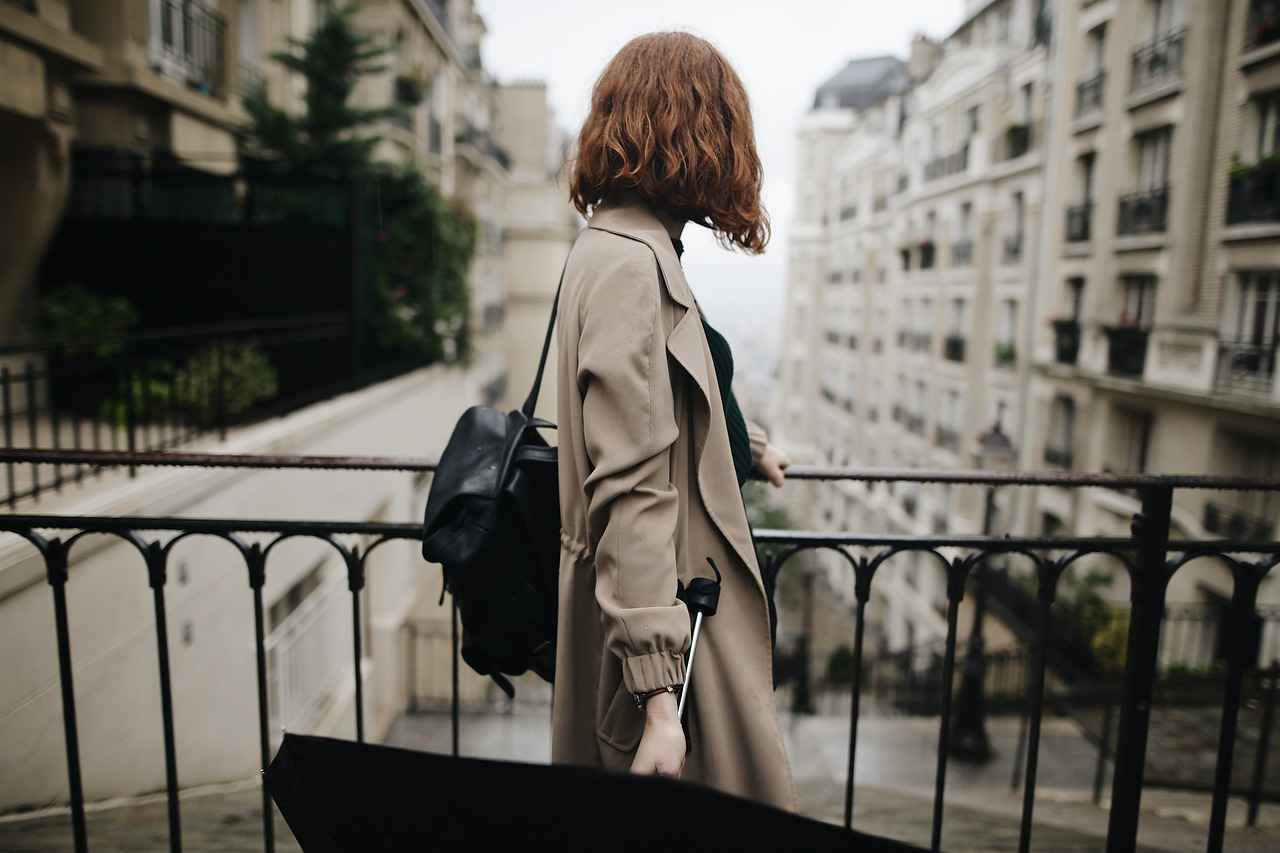
Selecting the Right Fabric
The fabric of your kimono plays a crucial role in determining not only its visual appeal but also its overall comfort. Different materials offer distinct advantages and are suitable for various occasions. Understanding these fabrics can help you make an informed choice when selecting your kimono.
- Silk Kimonos: Silk is the epitome of luxury when it comes to kimono fabrics. Known for its sheen and drape, silk kimonos are often reserved for formal events such as weddings and ceremonies. The lightweight nature of silk allows for elegant movement, making it a favorite among those who wish to make a statement.
- Cotton Kimonos: For a more casual and comfortable option, cotton kimonos are ideal. They are perfect for everyday wear and summer festivals due to their breathability and ease of maintenance. Cotton fabrics come in various prints and colors, making them a versatile choice for those new to wearing kimonos.
- Synthetic Blends: Many modern kimonos are made from synthetic blends that combine the best qualities of natural fibers with durability. These fabrics are often wrinkle-resistant and easier to care for, making them suitable for both casual and semi-formal occasions. They can mimic the look of silk or cotton while providing added practicality.
When selecting the right fabric for your kimono, consider the occasion, season, and personal comfort. Whether you opt for the elegance of silk, the casual vibe of cotton, or the practicality of synthetic blends, each fabric offers a unique way to express your style while honoring the rich tradition of kimono wearing.
Ultimately, the choice of fabric will not only affect how you look but also how you feel in your kimono, allowing you to fully embrace the cultural significance of this beautiful garment.
Silk Kimonos
are not just garments; they are a celebration of culture, elegance, and artistry. Often associated with formal events, these exquisite pieces are crafted from the finest silk, which gives them a luxurious feel and a stunning visual appeal. The sheen of silk reflects light beautifully, enhancing the garment’s overall aesthetic and making it a standout choice for special occasions.
The drape of a silk kimono creates a graceful silhouette that flatters the body while allowing for ease of movement. This flowing design is not only comfortable but also adds to the wearer’s elegance, making it a popular choice for events such as weddings, tea ceremonies, and cultural festivals.
When choosing a silk kimono, it’s essential to consider the design and color. Traditional patterns, such as floral motifs or geometric shapes, can convey different meanings and cultural significance. For instance, cherry blossoms symbolize the beauty and transience of life, making them a popular choice for spring events.
Accessorizing your silk kimono is equally important. A well-chosen obi (the sash worn around the waist) can enhance the overall look. Opt for contrasting colors or intricate designs that complement the kimono’s fabric. Additionally, incorporating traditional accessories like kanzashi (hair ornaments) can add a touch of authenticity to your outfit.
In conclusion, wearing a silk kimono is an opportunity to embrace a rich cultural heritage while showcasing personal style. Whether attending a formal event or participating in a cultural celebration, understanding the significance of this garment and how to wear it properly can enhance your experience and appreciation for this timeless attire.
Cotton Kimonos
are an excellent choice for those seeking a blend of comfort, style, and practicality. Their lightweight nature and breathable fabric make them a perfect option for everyday wear, especially during the warm summer months.
Unlike their silk counterparts, cotton kimonos are designed for casual occasions. They are often seen at summer festivals, where comfort is key. The ease of movement and relaxed fit allows wearers to enjoy festivities without feeling restricted. Additionally, cotton kimonos come in a variety of colors and patterns, making it easy to express personal style.
One of the significant advantages of cotton kimonos is their low maintenance requirements. They are machine washable, which makes them an ideal choice for those who may not have time for delicate fabric care. This practicality means you can wear your cotton kimono more frequently without the worry of damaging the fabric.
When it comes to accessorizing a cotton kimono, options abound. A simple obi can elevate the look, while obijime and haneri can add a touch of elegance. These accessories not only enhance the overall aesthetic but also allow for customization, making each outfit unique.
In summary, cotton kimonos are not just a fashion statement; they embody a sense of freedom and ease that resonates with modern lifestyles. Whether you’re attending a casual gathering or enjoying a summer festival, a cotton kimono is a versatile addition to your wardrobe. Embrace the comfort and style they offer, and you’ll find yourself reaching for them time and again.
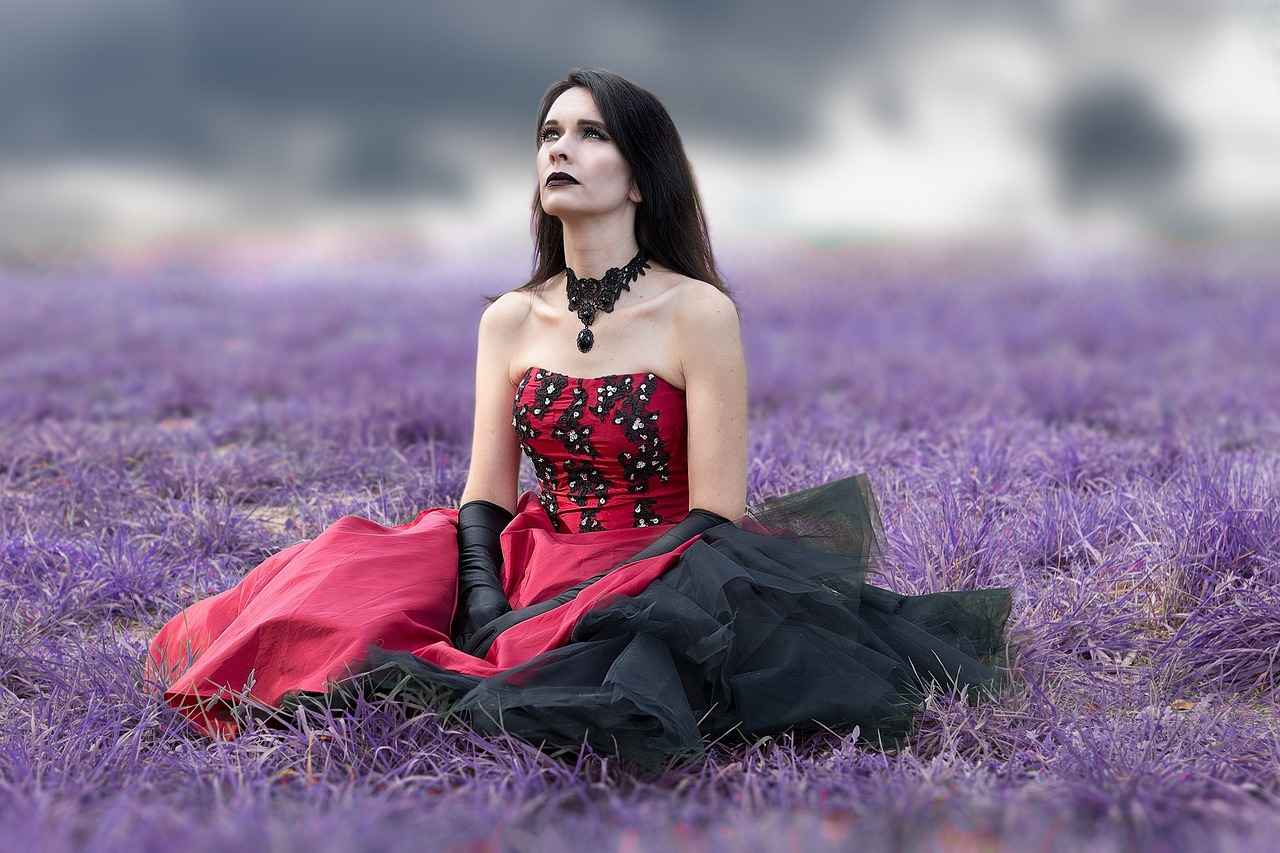
Accessorizing Your Kimono
is essential for achieving a polished and culturally respectful look. The right accessories can enhance your overall outfit and reflect your personal style. Below, we explore key accessories that play a vital role in completing your kimono ensemble.
| Accessory | Description | Significance |
|---|---|---|
| Obi | The wide belt that secures the kimono around the waist. | It not only keeps the kimono in place but also adds a focal point to the outfit. |
| Obijime | A decorative cord that wraps around the obi. | It adds an extra layer of detail and can be used to express personal style. |
| Haneri | A collar piece that can be added to the kimono. | It provides an opportunity for contrast and color coordination. |
Choosing the Right Obi: The obi is perhaps the most critical accessory. It comes in various styles, widths, and materials. For formal occasions, a fukuro obi is often recommended due to its elegance, while a hanhaba obi is more suitable for casual settings. Consider the color and pattern of the obi to ensure it complements your kimono.
Adding Obijime and Haneri: When selecting an obijime, opt for colors that either match or contrast beautifully with your kimono and obi. The haneri can also be a canvas for creativity; vibrant colors or intricate designs can make your outfit stand out. Remember, these accessories should enhance, not overpower, your overall look.
In conclusion, the right accessories can significantly elevate your kimono experience. By carefully selecting your obi, obijime, and haneri, you can create a harmonious and visually appealing outfit that pays homage to this beautiful cultural garment.
Choosing the Right Obi
The obi is a wide belt that plays a crucial role in securing the kimono, adding both function and flair to this traditional garment. When selecting an obi, it’s essential to consider not only the style and color but also how it complements the overall look of your kimono. The right obi can significantly enhance your outfit and reflect your personal style.
There are various styles of obi, each suited for different occasions:
- Hanhaba Obi: This is a half-width obi, typically used for casual kimonos like the yukata. It’s easier to tie and is often chosen for summer festivals.
- Fukuro Obi: A formal option that is wider and more structured, perfect for elegant occasions. This style often features intricate designs and is commonly worn with formal kimonos.
- Nagoya Obi: A versatile choice that is popular for both casual and semi-formal occasions. It has a unique shape that makes it easy to wear and style.
When it comes to color, consider the following:
- Complementary Colors: Choose an obi color that complements your kimono. For example, a soft pastel obi can enhance a bright kimono, adding depth to your outfit.
- Seasonal Colors: Embrace seasonal themes by selecting colors that reflect the time of year, such as warm tones for autumn or vibrant hues for summer.
- Personal Expression: Use the obi as a means to express your personality. Bold patterns can showcase creativity, while subtle designs may convey elegance.
In conclusion, selecting the right obi is not just about aesthetics; it’s about understanding its role in the overall kimono ensemble. By paying attention to style, color, and occasion, you can enhance your outfit and express your unique personality through this beautiful accessory.
Adding Obijime and Haneri
When it comes to enhancing the beauty of your kimono, obijime and haneri are essential accessories that can significantly elevate your overall appearance. These decorative elements not only serve a functional purpose but also add a touch of personal flair to your traditional attire.
Understanding Obijime
Obijime is a decorative cord that is tied around the obi (the wide belt of the kimono). It serves to secure the obi in place while adding a stylish accent. Available in various colors, patterns, and materials, choosing the right obijime can enhance the visual appeal of your kimono ensemble. For instance, a bright, contrasting obijime can create a striking focal point, while a subtle, complementary shade can provide a harmonious balance.
The Role of Haneri
Haneri, on the other hand, is the collar piece of the kimono. It is often made from a different fabric than the kimono itself, allowing for creative expression. The haneri can be embroidered or patterned, adding an extra layer of detail to your outfit. By selecting a haneri that complements the colors of your kimono and obijime, you can create a cohesive and visually appealing look.
Choosing Complementary Colors
When accessorizing with obijime and haneri, consider the color wheel. Using complementary colors can make your outfit pop, while analogous colors can create a more subtle, sophisticated look. For example, pairing a deep blue kimono with a light blue haneri and a contrasting orange obijime can create a vibrant and eye-catching combination.
Final Thoughts
Incorporating obijime and haneri into your kimono ensemble is an excellent way to express your personal style and enhance the cultural significance of your attire. By carefully selecting colors and patterns, you can ensure that your kimono is not only beautiful but also reflective of your unique personality.

How to Properly Wear a Kimono
Wearing a kimono correctly is essential for both comfort and style. Mastering the proper way to put on and adjust your kimono is crucial for achieving the desired look and ensuring a respectful presentation of this traditional garment.
The process of wearing a kimono involves several steps that need to be followed carefully. Here’s a step-by-step guide to help you wear your kimono properly:
- Start with the Undergarments: Before putting on the kimono, wear a juban (under-kimono) to protect the outer garment and ensure comfort.
- Put on the Kimono: Hold the kimono by the shoulders and slide your arms into the sleeves. Make sure the left side overlaps the right side, as this is the traditional way to wear it.
- Adjust the Length: Hold the hem of the kimono and lift it slightly to adjust the length. It should fall around your ankles for a polished look.
- Secure with an Obi: Wrap the obi (wide belt) around your waist to secure the kimono in place. Ensure it is tight enough to hold everything together but not so tight that it restricts movement.
- Final Adjustments: Make sure the collar sits comfortably around your neck and adjust the sleeves for a neat appearance. The sleeves should hang down naturally.
In addition to these steps, there are common mistakes to avoid when wearing a kimono:
- Do not wrap the kimono with the right side over the left, as this is reserved for dressing the deceased.
- Avoid mismatched accessories, which can detract from the overall elegance of the outfit.
- Ensure the obi is not too loose, as it may cause the kimono to shift throughout the day.
Understanding the cultural significance of the kimono is equally important. Wearing it correctly not only enhances your comfort and style but also shows respect for the rich traditions associated with this beautiful garment.
By following these guidelines, you can confidently wear a kimono at your next cultural event, embracing both its beauty and its cultural heritage.
Step-by-Step Guide
Step-by-Step Guide to Wearing a Kimono
Wearing a kimono is an art that combines tradition with elegance. To ensure you wear your kimono properly, follow this that will help you achieve a polished and respectful look.
- Start with the Under Garments: Begin by wearing a juban, which is a traditional undergarment. This helps to protect your kimono from sweat and dirt.
- Put on the Kimono: Slip into the kimono, ensuring that the back seam is aligned with your spine. The left side should always overlap the right side, as this is the traditional way to wear it.
- Adjust the Length: The hem of the kimono should ideally reach your ankles. If it’s too long, you can create folds at the waist and secure them with a koshihimo, a thin cord that helps keep the kimono in place.
- Secure with an Obi: The obi is a wide belt that secures the kimono. Wrap it around your waist, ensuring it’s snug but comfortable. Tie it in a bow at the back, which can be styled in various ways depending on the occasion.
- Add Accessories: Enhance your look with accessories such as an obijime (decorative cord) and haneri (collar piece). Choose colors that complement your kimono.
- Final Adjustments: Make any final adjustments to ensure the kimono sits well on your body. Check that the sleeves are not too tight and that the overall silhouette is flattering.
By following these steps, you can wear your kimono with confidence and grace. Remember that practice makes perfect, and each time you wear a kimono, you will become more familiar with the process.
Common Mistakes to Avoid
When it comes to wearing a kimono, the details matter significantly. To ensure that your attire is not only beautiful but also respectful of its cultural significance, it’s essential to avoid some common pitfalls. Here are key mistakes to steer clear of:
- Incorrect Folding: The way you fold your kimono is crucial. A poorly folded kimono can look unkempt and may not sit properly on your body. Always follow the traditional folding techniques to maintain the garment’s integrity.
- Mismatched Accessories: Accessories such as the obi (sash), obijime (decorative cord), and haneri (collar) should complement each other. Choosing colors and styles that clash can detract from the elegance of your outfit.
- Improper Fit: Ensure that your kimono fits well. A kimono that is too tight or too loose can be uncomfortable and unflattering. Always try on different sizes and styles to find the best fit for your body type.
- Neglecting the Layers: Kimonos are typically worn with multiple layers. Failing to wear these layers correctly can lead to an unbalanced look. Make sure to adjust each layer properly for a polished appearance.
- Ignoring Cultural Context: Understanding the cultural significance of the kimono is vital. Wearing it inappropriately or at unsuitable events can be seen as disrespectful. Always consider the occasion and choose the right type of kimono accordingly.
By avoiding these common mistakes, you can ensure that your kimono looks elegant and respectful, allowing you to fully appreciate and honor this beautiful garment at your next cultural event.
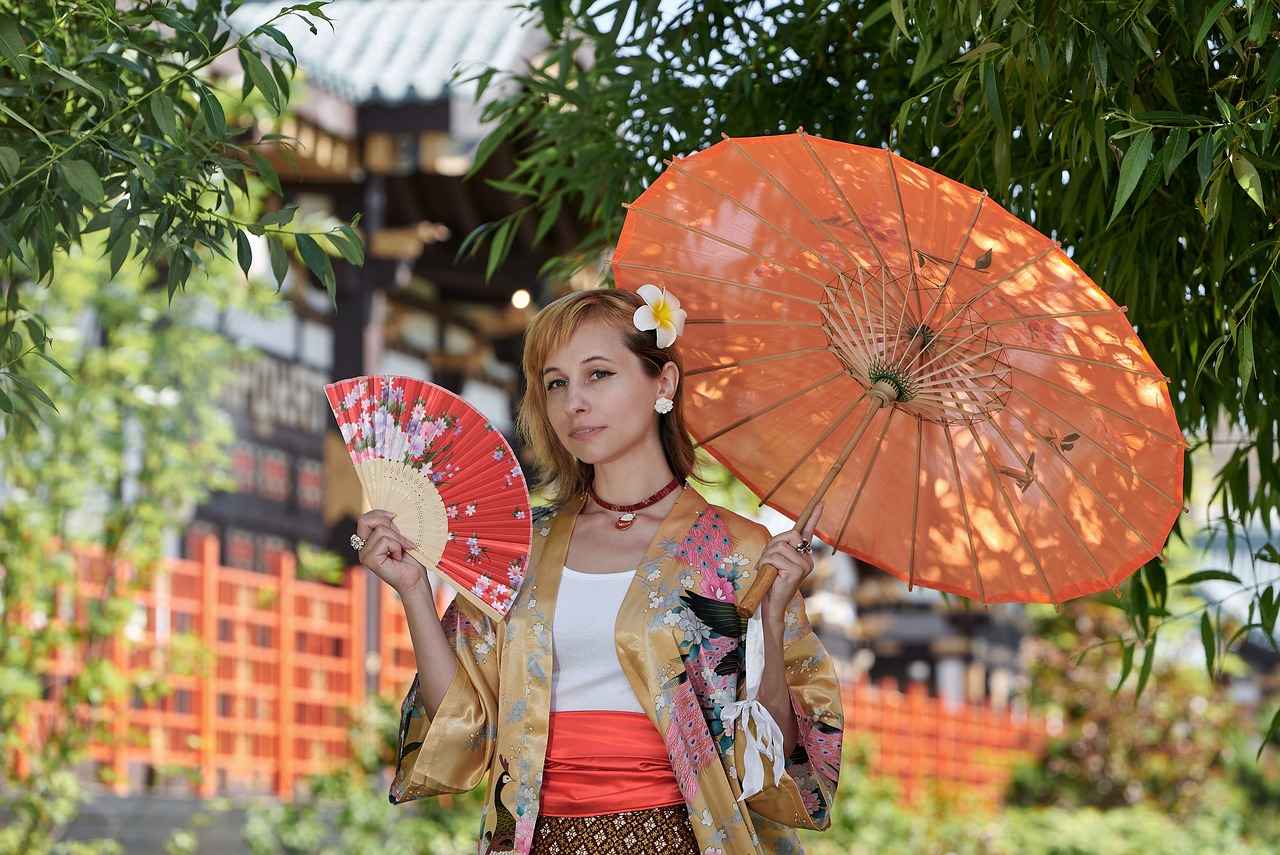
Understanding Kimono Etiquette
is essential for anyone wishing to wear this beautiful garment. Kimonos are not merely clothing; they are a representation of Japanese culture, history, and tradition. Wearing a kimono comes with a set of guidelines that reflect respect for its cultural significance.
First and foremost, it’s important to recognize that the kimono is traditionally worn on special occasions such as weddings, tea ceremonies, and festivals. Therefore, understanding when it is appropriate to wear a kimono is crucial. For example, wearing a formal kimono such as a furisode is suitable for a wedding, while a yukata is perfect for summer festivals.
Additionally, the way you wear a kimono matters. The proper way to wear a kimono involves specific techniques for wrapping and securing the garment. It is essential to ensure that the left side of the kimono is always over the right, as the opposite is reserved for dressing the deceased. This practice is a sign of respect and is deeply rooted in Japanese tradition.
- Posture: Maintain a straight posture while wearing a kimono. This enhances the elegance of the garment.
- Movement: Be mindful of your movements. Avoid wide strides and sudden movements to preserve the kimono’s shape.
- Footwear: Traditional footwear, like geta or zori, should be worn to complete the outfit appropriately.
Moreover, it’s critical to show respect for the kimono’s cultural heritage. This includes understanding its history and the context in which it is worn. Engaging with the culture surrounding the kimono can greatly enhance your experience and appreciation of this beautiful garment.
In conclusion, following kimono etiquette not only ensures that you look your best but also shows respect for the rich cultural significance of this traditional attire. By understanding the nuances of wearing a kimono, you can confidently embrace this beautiful aspect of Japanese culture.
Appropriate Situations for Wearing a Kimono
Wearing a kimono is a beautiful way to honor Japanese culture, but understanding the appropriate situations for donning this traditional garment is essential. Different occasions call for different styles and levels of formality. Here’s a detailed look at when and where you should wear a kimono.
- Formal Events: Kimonos are often worn at weddings, tea ceremonies, and other formal gatherings. For these occasions, opt for a tomesode or furisode, which showcase elegance and respect.
- Cultural Festivals: Summer matsuri (festivals) are perfect for wearing a yukata, a casual cotton kimono. These events are vibrant and festive, allowing for playful patterns and colors.
- Seasonal Celebrations: During seasonal events like Hanami (cherry blossom viewing) or Shichi-Go-San (a rite of passage for children), wearing a kimono adds to the celebratory atmosphere. Choose styles that reflect the season’s colors and themes.
- Family Gatherings: Special family events, such as anniversaries or reunions, are also appropriate for wearing a kimono, especially if they hold cultural significance.
- Religious Ceremonies: Attending Shinto or Buddhist ceremonies often calls for wearing a kimono to show reverence. The tomesode is particularly suitable for married women at such events.
Understanding these contexts helps you choose the right kimono, ensuring that you not only look beautiful but also show respect for the traditions and customs surrounding this iconic garment.
In conclusion, wearing a kimono can be a delightful experience, provided you choose the right occasion and style. By following these guidelines, you can wear your kimono with confidence and grace.
Respecting Cultural Significance
When it comes to wearing a kimono, it is essential to approach this beautiful garment with a deep sense of respect for its cultural heritage. The kimono is not merely a piece of clothing; it embodies centuries of Japanese history, tradition, and artistry. Understanding its significance allows wearers to appreciate its beauty while honoring the culture it represents.
The kimono has evolved over time, reflecting changes in Japanese society and fashion. Historically, the kimono was worn daily by individuals across all social classes, but today, it is primarily reserved for special occasions such as weddings, festivals, and ceremonial events. Each type of kimono, from the casual yukata to the formal furisode, carries its own meaning and context. Therefore, it is crucial to choose the right style according to the event being attended.
Moreover, understanding the symbolism behind the colors and patterns of kimonos is equally important. For instance, certain colors may signify happiness, while others may represent mourning. Being aware of these meanings helps in making informed choices that align with the occasion’s spirit.
Additionally, wearing a kimono involves adhering to specific etiquette. This includes knowing how to properly don the garment, as well as understanding the significance of accessories like the obi (belt) and obijime (decorative cord). Missteps in these areas can unintentionally convey disrespect towards the culture.
In conclusion, approaching the kimono with respect means immersing oneself in its cultural context. By appreciating its history, understanding its symbolism, and adhering to proper etiquette, wearers can honor the tradition while enjoying the beauty of this iconic garment.
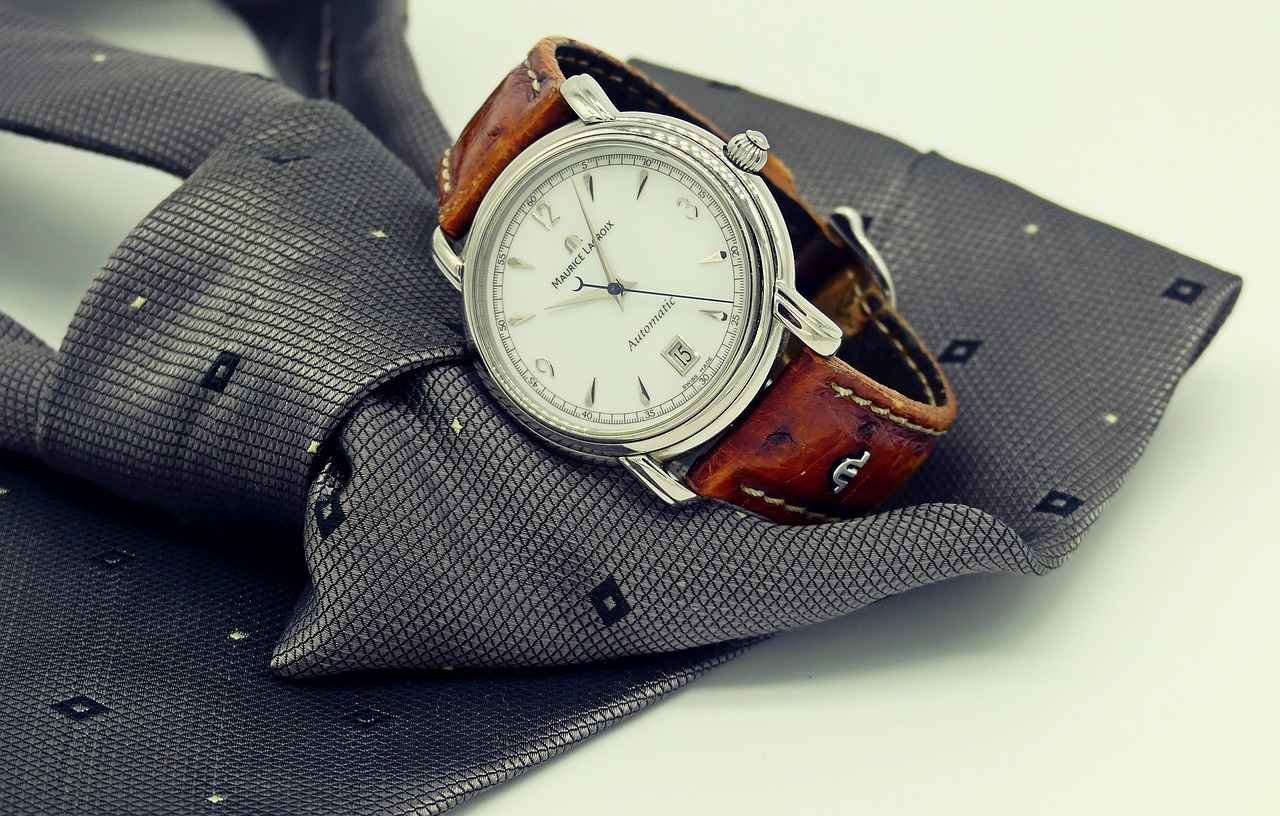
Conclusion: Embracing the Kimono Culture
Wearing a kimono transcends mere fashion; it represents a deep cultural tradition that has been cherished for centuries. This elegant garment is not only a symbol of Japanese heritage but also a way to connect with a rich history and artistry. By understanding the nuances of the kimono, you can wear it with the respect and appreciation it deserves.
When you choose to don a kimono at your next cultural event, it is essential to consider several factors. First, familiarize yourself with the different styles and fabrics available. Each type of kimono, whether it be the casual yukata or the formal furisode, serves a unique purpose and is appropriate for specific occasions. This knowledge will help you select the right kimono that aligns with the event’s formality and cultural significance.
Moreover, accessorizing plays a crucial role in completing your look. Items such as the obi, obijime, and haneri not only enhance your outfit but also reflect your personal style. Be mindful of color coordination and the overall aesthetic to ensure a polished appearance.
It is equally important to understand the etiquette associated with wearing a kimono. Knowing when and where to wear this garment, along with the appropriate behaviors, enhances your experience and shows respect for the culture. This includes understanding the history of the kimono and its significance in Japanese society.
In conclusion, wearing a kimono is a beautiful way to embrace and celebrate a rich cultural tradition. With the right knowledge, preparation, and respect, you can confidently wear a kimono at your next event, making a meaningful connection to the culture it represents.
Frequently Asked Questions
- What is the difference between a yukata and a furisode?
The yukata is a casual summer kimono made of lightweight cotton, perfect for festivals. In contrast, the furisode is a formal kimono with long sleeves, typically worn by young women during special occasions like weddings and coming-of-age ceremonies.
- How do I choose the right fabric for my kimono?
Choosing the right fabric depends on the occasion. Silk kimonos are luxurious and ideal for formal events, while cotton kimonos are more casual and comfortable, making them great for everyday wear or summer festivals.
- What accessories do I need to wear with my kimono?
Key accessories include the obi (a wide belt), obijime (decorative cord), and haneri (collar piece). These items not only secure your kimono but also add a personal touch to your overall look.
- Can I wear a kimono to any event?
While kimonos can be worn at various events, it’s essential to consider the occasion. Certain styles and levels of formality are appropriate for specific events, so always choose your kimono accordingly.
- What are some common mistakes to avoid when wearing a kimono?
Common mistakes include incorrect folding, mismatched accessories, and not adjusting the layers properly. Ensuring your kimono is worn correctly enhances both comfort and style.
